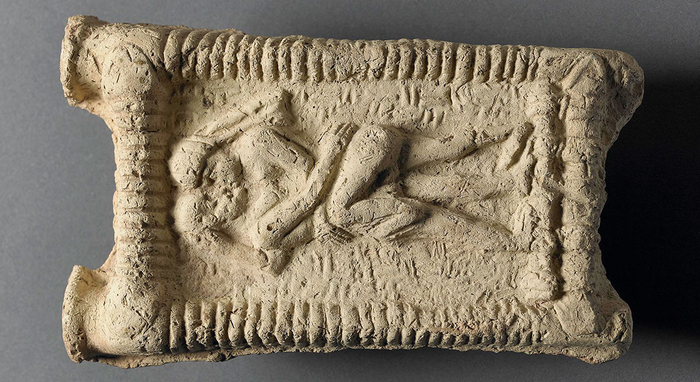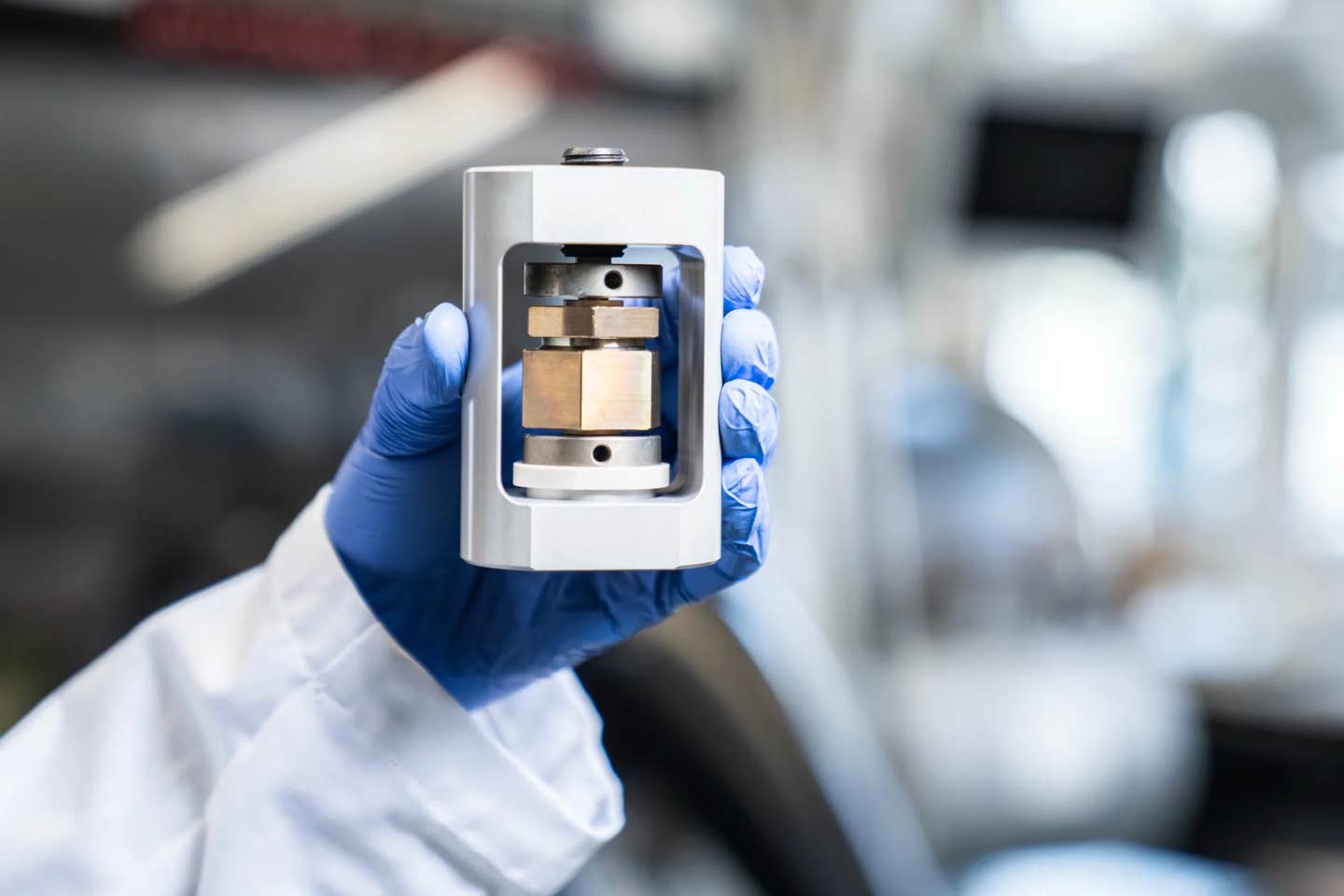Researchers discover evidence of humanity’s earliest recorded kiss
Emerging studies have postulated that the initial traces of human lip kissing can be traced back to a precise location in South Asia.

[May 20, 2023: Staff Writer, The Brighter Side of News]
Babylonian clay model showing a nude couple on a couch engaged in sex and kissing. Date: 1800 BC. (CREDIT: © The Trustees of the British Museum)
Emerging studies have postulated that the initial traces of human lip kissing can be traced back to a precise location in South Asia approximately 3,500 years ago. From this point, it possibly expanded to diverse regions, inadvertently expediting the transmission of herpes simplex virus 1.
Contrarily, Dr Troels Pank Arbøll from the University of Copenhagen and Dr Sophie Lund Rasmussen from the University of Oxford propose a different timeline in a recent publication in the journal Science.
They assert, based on an assortment of documents from the earliest Mesopotamian societies, that the act of kissing was already a prevalent custom in the Middle East around 4,500 years ago. The act may have been practiced even earlier, thus pushing back the earliest recorded instance of kissing by 1,000 years from what has been traditionally accepted in the scientific sphere.
According to Dr Troels Pank Arbøll, an expert on the history of medicine in Mesopotamia, “In ancient Mesopotamia, which is the name for the early human cultures that existed between the Euphrates and Tigris rivers in present-day Iraq and Syria, people wrote in cuneiform script on clay tablets.
Related Stories
Many thousands of these clay tablets have survived to this day, and they contain clear examples that kissing was considered a part of romantic intimacy in ancient times, just as kissing could be part of friendships and family members’ relations.”
“Therefore, kissing should not be regarded as a custom that originated exclusively in any single region and spread from there but rather appears to have been practiced in multiple ancient cultures over several millennia,” he continues.
“In fact, research into bonobos and chimpanzees, the closest living relatives to humans, has shown that both species engage in kissing, which may suggest that the practice of kissing is a fundamental behaviour in humans, explaining why it can be found across cultures”, says Dr Rasmussen.
A clay model from Mesopotamia, dated ∼1800 BCE, shows a couple kissing. The original is kept at the British Museum. (CREDIT: The British Museum)
The potential for disease transmission through kissing
Besides its significance in social and intimate interactions, the act of kissing could have inadvertently acted as a conduit for transmitting microscopic life forms, possibly leading to the proliferation of viruses in humans.
Nevertheless, it remains questionable whether kissing can be viewed as an immediate biological catalyst for the dispersion of specific pathogens. One such example is the herpes simplex virus 1. Scientists propose that its spread could have been expedited by the advent of kissing, highlighting the uncertainty surrounding this concept.
Dr Arbøll believes that, “There is a substantial corpus of medical texts from Mesopotamia, some of which mention a disease with symptoms reminiscent of the herpes simplex virus 1.”
He adds that the old medical manuscripts were shaped by an assortment of cultural and religious notions. Thus, it's crucial to note that these cannot be directly interpreted as they appear.
“It is nevertheless interesting to note some similarities between the disease known as buʾshanu in ancient medical texts from Mesopotamia and the symptoms caused by herpes simplex infections. The bu’shanu disease was located primarily in or around the mouth and throat, and symptoms included vesicles in or around the mouth, which is one of the dominant signs of herpes infection.”
“If the practice of kissing was widespread and well-established in a range of ancient societies, the effects of kissing in terms of pathogen transmission must likely have been more or less constant”, says Dr Rasmussen.
Dr. Arbøll and Dr. Rasmussen suggest that the forthcoming discoveries from studies on ancient DNA, which will undeniably prompt discussions about intricate historical progressions and societal exchanges - for instance, the role of kissing in the spread of early diseases - will be significantly enhanced by a multidisciplinary methodology.
Note: Materials provided above by The Brighter Side of News. Content may be edited for style and length.
Like these kind of feel good stories? Get the Brighter Side of News' newsletter.



